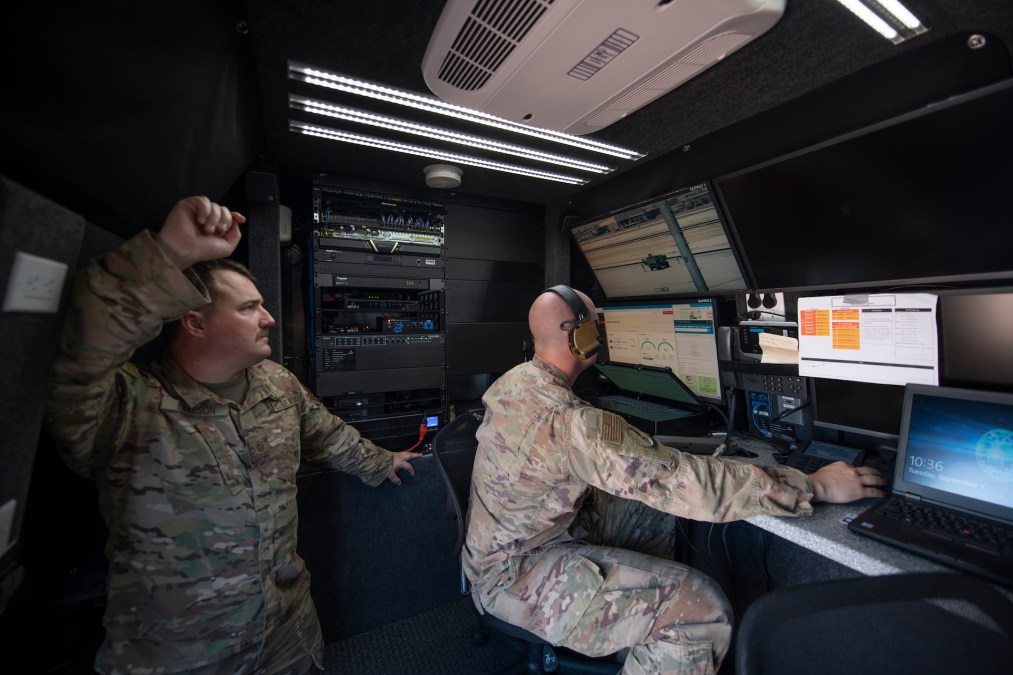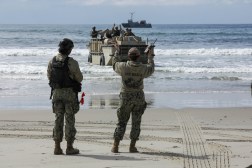Pentagon eyeing ‘bridging’ solutions for JADC2

Developing new technologies and architectures to enable the U.S. military’s ambitious vision for Combined Joint All-Domain Command and Control may take a while. In the near term, the Department of Defense needs “bridging” solutions that might be discarded once better capabilities come online, according to a top official overseeing the initiative.
The aim of CJADC2 is to connect the various sensors, shooters and data streams of the armed services and their international partners, under a more unified network. A number of efforts are underway to facilitate that, include the Department of the Air Force’s Advanced Battle Management System, the Department of the Navy’s Project Overmatch, and the Army’s Project Convergence.
A cross-functional team on the Joint Staff has been set up to provide guidance across the services.
“One of the things that we have identified in the CJADC2 CFT is the requirement for a bridging solution, right, because we need something today to close the gap or to smooth interoperability,” Rear Adm. Susan BryerJoyner, the Joint Staff’s deputy director for command, control, communications and computer/cyber systems, J-6, said during a panel at the Association of Old Crows annual symposium.
“A bridging solution is something that’s good enough today but may not be the final solution. That is not exactly aligned with the way we do business in DOD, or the way that Congress likes to … see us do business, because that could be viewed as wasteful. And so what we also do is to say, ‘Okay, for the long term, is there a specific vector that we think the bridging solution should kind of aim to bridge towards?’ And when there is, we try and marry the two. Sometimes there’s not, because the solution may still be in development and there’s nothing to bridge to,” she said.
Her team has been working with the Pentagon’s cost assessment and program evaluation office. CAPE, as the organization is known, conducts strategic portfolio reviews and program reviews, provides independent cost estimates, and offers guidance and sufficiency reviews for analyses of alternatives.
“In my, you know, monthly discussions or so with CAPE as we start to get into where do you recommend I make investments [and] what’s good enough … we’re drawing on all of the different types of analysis in the department to figure out what’s good enough for a given time horizon, and then to clearly articulate the message to Congress to say: ‘This is not duplicative. This is with deliberate … malice of forethought that we have to do this. And here are the reasons why,’” she said.
BryerJoyner also chairs the functional capabilities board, which examines joint requirements.
“I can look at all of my portfolio for requirements and I can look at all the demand signals from CJADC2 and I can start to make recommendations regarding prioritization across the joint force — not just in the capabilities, but in the doctrine and the experimentation and the exercises to make sure that we are able to deliver resilient CJADC2 as a warfighting function,” she said.
Combined Joint All-Domain Command and Control isn’t just a set of technologies or “a thing” that the department will buy, she noted.
“It is a warfighting function enabled by technology and executed by trained and ready forces. And I think that’s important for everybody to recognize as we talk about modernizing the way we fight,” BryerJoyner said.






